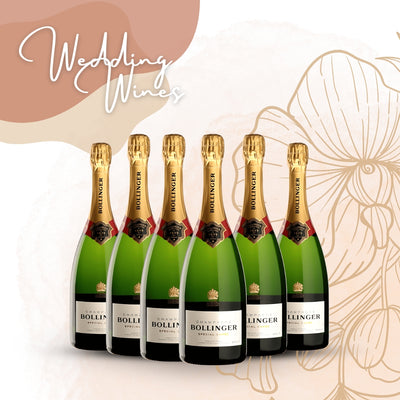Sakepedia for beginners
Sake drinking is not limited to Japanese restaurants nowadays. You could see a growing interest in sake in countless social events, dinner banquets, outdoor camping activities or even on the cocktail lists in bars.
If you haven’t fallen into love with exquisite rice wine yet, uncover an umami chapter by starting with the basics. Here are some key terms and concepts which definitely lead you to the fascinating world of rice-based drinking.
From now until 30 April 2022, Jebsen Wines and Spirits brings you the taste of Sakura. Sake, Japanese Spirits and Rose up to 20% off. You can enjoy 3 extra surprises!
Surprise 1
Spend HK$800 or above to get a free Sake and Rose Ice Mold. Jebsen Wines and Spirits members can enjoy free delivery service.
Surprise 2
Purchase 1 bottle of Roku Gin to get a limited edition Roku Gin Glass*. Enter Promo Code: ROKUGLASS to enjoy the offer.
Purchase 2 bottles of Roku Gin to get a limited edition Roku Tea Set*. Enter Promo Code: ROKUTEA to enjoy the offer.
Surprise 3
Spend HK$1,000 or above to get a 15% off Paul Lafayet e-Coupon.
*Available while stock lasts.
Terms & Conditions Apply
Junmai vs Non-Junmai
You probably think every sake is purely made with rice and wonder why there’re junmai (literally means pure rice) and non-junmai sake. When you found the term “Junmai” such as “Junmai Ginjo” or “Junmai Daiginjo” on a sake label, it means the bottle only contains rice, water and rice koji. This type of sake is richly bodied and full of umami flavour. On the contrary, when a label does not show “Junmai”, but only “Ginjo”, “Daiginjo” or “Honjozo”, it refers to the addition of alcohol during sake brewing, resulting in a more fragrant and vibrant drink.
Ginjo vs Daiginjo
You might have noticed the rice polishing rate is listed on every bottle of sake. The number actually refers to the percentage of the remaining grain after milling. The smaller the percentage, the smaller the rice grains, which produce a more elegant and lighter style. Sake is considered as “Daiginjo”-grade when the rice polishing rate is 50% or below, “Ginjo”-grade is required to achieve 60% or below. Both of them are regarded as premium sake. If it is added with alcohol and reaches 70% or below, it would be classified as “Honjozo”. “Junmai” does not have any rice milling requirement. Some sake breweries achieve a highly polished effect in pursuit of creating a more delicate, sophisticated and fruitier character. For example, Eiko Fuji polishes to 24%, Senkin polishes to 19% while Zankyo achieves 7%.
Sake Rice Varietal
Get to know the rice varietals as it’s critical to the taste of sake. With more than 100 varietals of sake rice cultivated in different prefectures across Japan, you’d probably love to meet the most renowned one, Yamadanishiki, also known as the King of Sake Rice, which produces an opulent expression of sake. Miyamanishiki, grown widely in Nagano and Yamagata prefectures, is similarly excellent for brewing smooth Junmai Ginjo. Gohyakumangoku is best known for its large inner core that produces a clean and fresh style while Omachi gives complexity to the rice wine. There’re many more upcoming varietals such as Koshitanrei, Sakemirai, Dewa-Sansan, Kura-no-Hana and Homarefuji that you cannot miss.
Sweetness vs Dryness
Every region or every style of sake has built its own fanbase. In terms of sweetness, some would go for the sweeter and more soothing style, whilst some like the dryer one with a more noticeable alcohol which brings a spicier and more powerful mouthfeel. The sweetness level is subject to various factors in the sake brewing process, including the use of water source, rice varietal and yeast.
Fruity vs Umami
To pick your favourite sake, you definitely have to know your own preference. For instance, would you go for a lighter body or a fuller body? Do you prefer fruity or umami flavour? If you’re a fan of the lighter and fruitier style with a sweet softness, go for Ginjo or Daiginjo. If you’re not a huge fan of fruitiness but only want sake to pair your meal, go for the crisp and fresh Honjozo. For those who enjoy rich umami flavour, savour the Junmai collection or try those sake fermented with natural bacteria, such as Kimoto and Yamahai for its complexity of aromas and sophisticated textures.
Filtered vs Unfiltered
During the sake brewing process, in order to produce pure and clean sake, impurities and lees are usually removed by steps like filtration and pasteurization. As more drinkers turn to a raw flavour on the palette, some breweries satisfy these drinkers with Nigorizake, a coarsely filtered sake; and Namazake, an unpasteurized sake. Both deliver soft texture and natural taste.
Genshu, a freshly brewed sake without being diluted, is another option for those who enjoy the original flavour, as the undiluted 20% alcohol level brings power with a robust character.
Hot Sake vs Chilled Sake
When it comes to the temperature, there’re always debates on the serving temperature. In fact, sake can be enjoyed over a wide range of temperatures but there’s always an ideal one to express the best of the sake flavour. For the full-bodied and umami-rich Junmai type, heat the sake up to 40 or 50 Celsius degrees and serve in a Japanese sake cup or Ochoko. To enjoy the refreshing style of Honjozo, Namazake or the delicate Ginjo and Daiginjo, chill it to around 8 to 12 Celsius degrees, use a wine glass to elevate the level of enjoyment. Sakes like Komoto and Yamahai present completely different styles when heated and chilled. So tell us which temperature you prefer.
There’s nothing more magical than the sake brewing process which turns a little rice grain into distinctive enjoyment for your tastebuds. Tell us which sake you’d pick to begin your unique sake adventure?
Taste of Sakura




